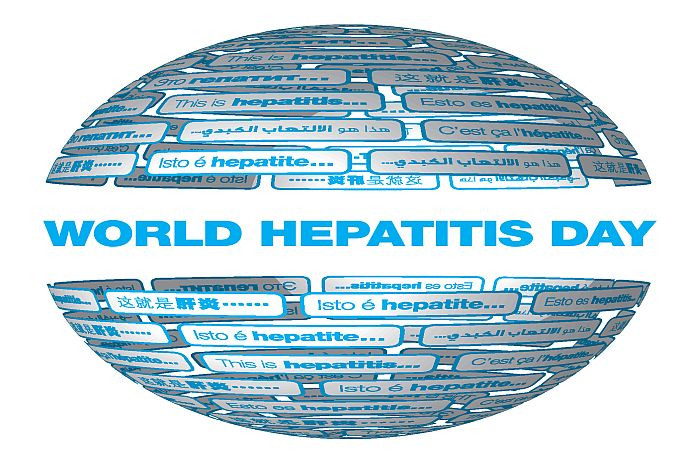GENEVA, Switzerland – To mark World Hepatitis Day, WHO is calling for scaling up testing and treatment for viral hepatitis, warning that the disease could kill more people than malaria, tuberculosis, and HIV combined by 2040, if current infection trends continue.
Hepatitis causes liver damage and cancer and kills over a million people annually. Of the 5 types of hepatitis infections, hepatitis B and C cause most of the disease and deaths. Hepatitis C can be cured; however, only 21 percent of people living with hepatitis C infection are diagnosed and only 13 percent have received curative treatment. Just 10 percent of people living with chronic hepatitis B are diagnosed, and only 2 percent of those infected are receiving lifesaving medicine.
Under the theme of “One life, one liver”, WHO’s World Hepatitis Day campaign highlights the importance of protecting the liver against hepatitis for living a long, healthy life. Good liver health also benefits other vital organs – including the heart, brain and kidneys – that rely on the liver to function.
“Millions of people are living with undiagnosed and untreated hepatitis worldwide, even though we have better tools than ever to prevent, diagnose and treat it,” said Dr Tedros Adhanom Ghebreyesus, WHO director-general. “WHO remains committed to supporting countries to expand the use of those tools, including increasingly cost-effective curative medication, to save lives and end hepatitis.”
WHO will share new guidance to track countries’ progress on the path to the elimination of hepatitis by 2030. To reduce new infections and deaths from hepatitis B and C, countries must: ensure access to treatment for all pregnant women living with hepatitis B, provide hepatitis B vaccines for their babies at birth, diagnose 90 percent of people living with hepatitis B and/or hepatitis C, and provide treatment to 80 percent of all people diagnosed with hepatitis. They must also act to ensure optimal blood transfusion, safe injections and harm reduction.
Vaccination, testing and treatment – vital opportunities to protect your liver from hepatitis
The reduction of hepatitis B infections in children through vaccination is a key intervention to limit viral hepatitis infections overall. The target for hepatitis B incidence is the only Sustainable Development Goals’ (SDG) health target that was met in 2020 and is on track for 2030. However, many countries in Africa do not have access to the birth dose hepatitis B vaccines. Gavi’s recent restart of its Vaccine Investment Strategy 2018 – which includes the birth dose hepatitis B vaccine – will jumpstart newborn vaccination programmes in west and central Africa, where mother-to-child hepatitis B transmission rates remain very high.
To help eliminate mother-to-child transmission, WHO recommends that all pregnant women should be tested for hepatitis B during their pregnancy. If positive, they should receive treatment and vaccines should be provided to their newborns. However, a new WHO report shows that of the 64 countries with a policy, only 32 countries reported implementing activities to screen for and manage hepatitis B in antenatal clinics.
The report also shows that of the 103 countries that reported, 80 percent have policies to screen and manage hepatitis B in HIV clinics, with 65 percent doing the same for hepatitis C. Increasing hepatitis testing and treatment within HIV programmes will protect people living with HIV from developing liver cirrhosis and liver cancer.
After years of increasing treatment rates, the rise in the number of people accessing hepatitis C curative treatment is slowing. WHO advocates for taking advantage of price reductions in medication to reaccelerate progress in expanding treatment. A 12-week course of medication to cure hepatitis C now costs 60 US dollars for low-income countries, down from the original costs of more than 90 000 US dollars when first introduced in high-income countries. Treatment for hepatitis B costs less than 30 US dollars per year (US$2.4 per month).
For people who want to maintain liver health, WHO recommends hepatitis testing, treatment if diagnosed, and vaccination against hepatitis B. Reducing alcohol consumption, achieving a healthy weight, and managing diabetes or hypertension also benefit liver health.





